The king mackerel reigns supreme in the minds of many offshore fishermen who live between Texas and Virginia. And why not? Kingfish strike with abandon, fight hard, and get quite large. Plus, the stocks of kings came back from the brink of collapse when fishery managers wisely eliminated drift gill nets in the 1990s, so plenty of fish can be found in a great many places along the southeast United States coast.
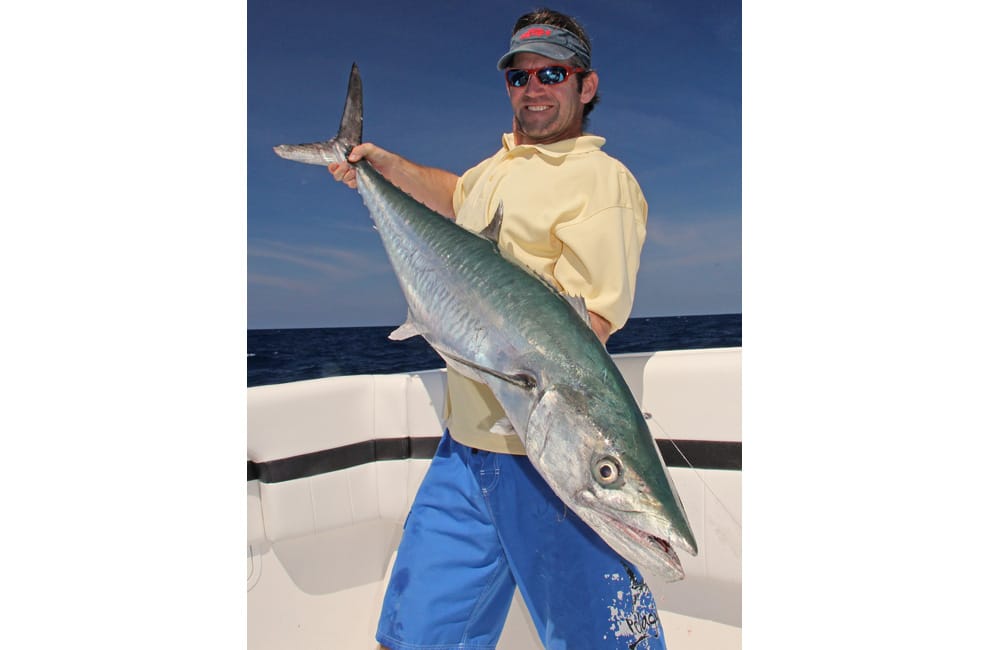
This combination of factors spawned one of the most successful tournament series in history, the Southern Kingfish Association, and that series created a whole army of men and women who became experts at finding and catching big kingfish. It also provided welcome relief to the charter fleet in the South, allowing anglers to catch kings on a regular basis as part of a South Atlantic and Gulf of Mexico mixed bag.
You can catch kingfish on lots of different rigs, but for the truly big fish, most pros rely on live bait. Big king mackerel bait is necessary. And while rigging for kingfish is surely not rocket science, there exist many subtle tricks you can employ to maximize your chances of success. We recently spoke with three such professional fishermen — two SKA pros and one charter captain — and asked them to tell us of some of those tricks.
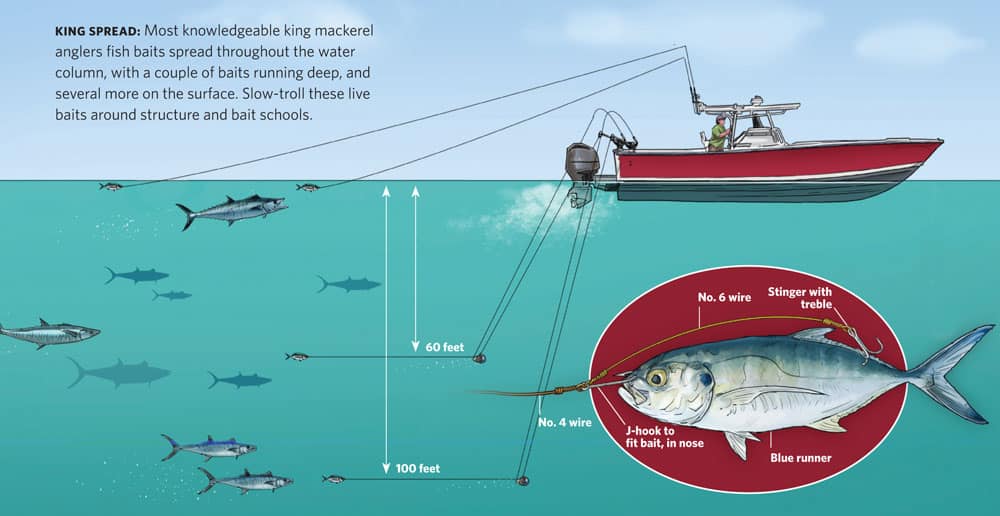
Louisiana Kingfish Fishing
Bill Butler
Location: Belle Chase, Louisiana
Together with his brother Mike, Bill Butler owns Venice Marina in Venice, Louisiana, one of the best-known king mackerel hot spots in the world. The fertile waters of the northern Gulf of Mexico off the mouth of the Mississippi River consistently produce some of the most and the biggest kingfish found anywhere.
The Butlers, who run a 42-foot Invincible named Crawgator, have posted many wins on the SKA trail, and have hosted numerous tournaments out of their marina. Live-baiting has become an art form in that part of the world, and the kingfish bait supply there at times has to be seen to be believed.
“During fall, we sometimes get schools of pogies (Atlantic menhaden) that stretch as far as the eye can see,” Butler says. “The kingfish follow the pogies in huge schools, so pogies are always one of our top baits. But you’re not as likely to catch as many big fish on the pogies as you are on other baits.”
For the big kings, Butler likes blue runners (hardtails), bluefish and Spanish mackerel. “We find the bluefish in fall,” he says, “and sometimes we’ll fish five- or six-pounders. The big kings love them.” The fall mullet run presents opportunity as well, when the roe mullet arrive in their annual migration. The big kingfish follow them in.
“Every platform in the Gulf has hardtails around it,” Butler says. “We fish around the rigs a lot, and we’ll put 70 or 80 baits in the well before we start. If we need more, we can always toss a sabiki rig up by the well and catch a few more.”
Structure plays an important role in king mackerel fishing, and the thousands of oil rigs in the Gulf make a natural place for kings to hold. He likes to fish two king mackerel baits deep on downriggers, and at least two more on the surface in the prop wash. Hearty blue runners are also great for slow trolling live bait for kingfish.
Butler says that you learn where big kings are likely to be through experience. “If you kill a big buck deer hunting, you’re liable to go back to that same spot next season,” he says. “It’s the same with kingfish — big fish stay in the same places.”
How to Rig Live Bait for King Mackerel
Rigging for kingfish requires wire leaders, as the fish sport formidable teeth, and kingfish rigs are typically simple affairs: a lead hook, often a J-hook, with one or more treble stinger hooks, which can be embedded near the bait’s tail or allowed to swing freely. The size of wire used often varies with water clarity. “I fish 90- to 130-pound wire exclusively,” Butler says. “And unlike some other guys, we fish a lot of drag. When you’re catching up to 50 fish a day like we often do around here, you just don’t have time to mess with the smaller fish. You want to get them in and get your baits back out looking for that one big one.”
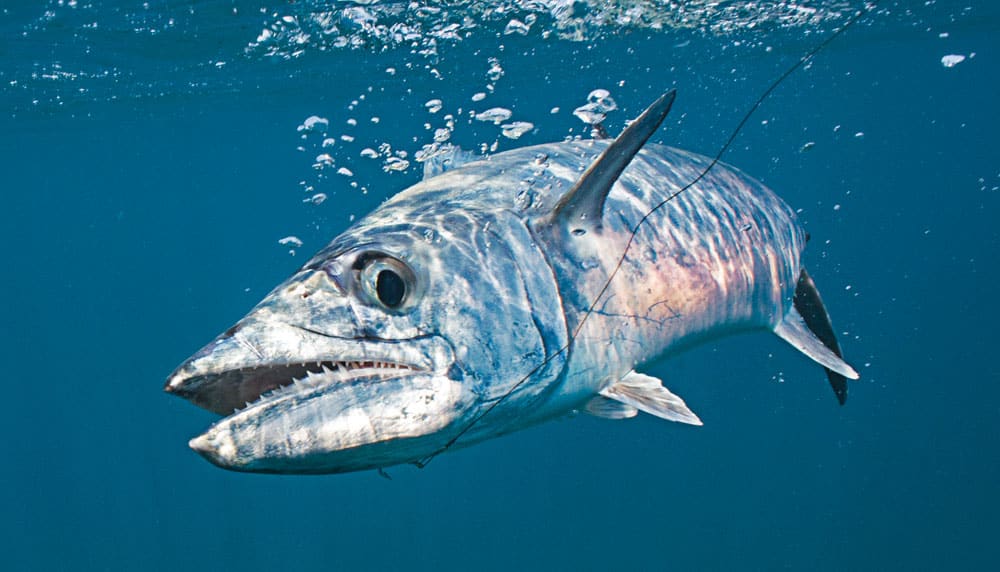
Florida Kingfish Fishing
Dave Workman Jr. Location: Ponte Vedra Beach, Florida
Workman fishes a 32-foot Yellowfin, and he owns Strike Zone Tackle in Jacksonville, Florida. He’s one of the best-known king mackerel tournament anglers in the world, having won SKA’s angler of the year honors three times. Like Butler, Workman likes fishing pogies for kingfish bait.
“We have big schools of pogies from Cape Canaveral, Florida, all the way up to Virginia,” he says. “We find them along the beach and throw cast nets on them. The pelicans often sit on top of the schools of bait, or sometimes you’ll hear them ‘pop’ early in the morning when they flip. Other times, they turn the water brown as big schools of them roil up the sand.”
He says you have to keep fresh baits out there all the time, so some special handling is required. “I put 1½ pogies per gallon of water in my livewell,” he explains, “so that’s 75 baits for a 50-gallon well.” He adds that if the water’s really hot, as it often is in the dead of summer, you have to reduce the number of baits in the well.
But pogies eventually tire and get red noses from bumping into the walls of the livewell as they swim. “Fresh bait is everything,” Workman says, “so don’t be afraid to dump your wells at noon and go back to the beach for a fresh supply.” Workman often fishes the pogies just off the beach in 12 to 20 feet of water, near the schools where he originally caught them, so it’s not usually too far to return.
But he also shares Butler’s view on targeting larger fish with pogies. “You catch bigger fish more consistently on blue runners than you do on pogies,” he says, “but blue runners are harder to find in Northeast Florida. No matter what kind of bait you’re looking for, it’s hard to beat resident bait.”
He told us a story of fishing out of Canaveral: As he launched his boat before sunup, he heard bait flipping under a bridge. He tossed his cast net and came up with a netful of silver mullet, another great bait for kings. “It depends on what time of year it is,” he explains, “but be opportunistic. When the fall mullet run is going on, you can bet there will be kings following the mullet, so use them.”
Workman fishes larger baits in 35 to 50 feet of water over structure like wrecks, hard bottom and depressions. He rigs with a single lead hook on No. 4 wire with No. 6 wire for the trailing treble hooks. He’ll fish slightly larger wire in the Gulf where the water’s greener. “The main thing is to find the bait,” he adds. “The big kings will be where the bait is holding.”
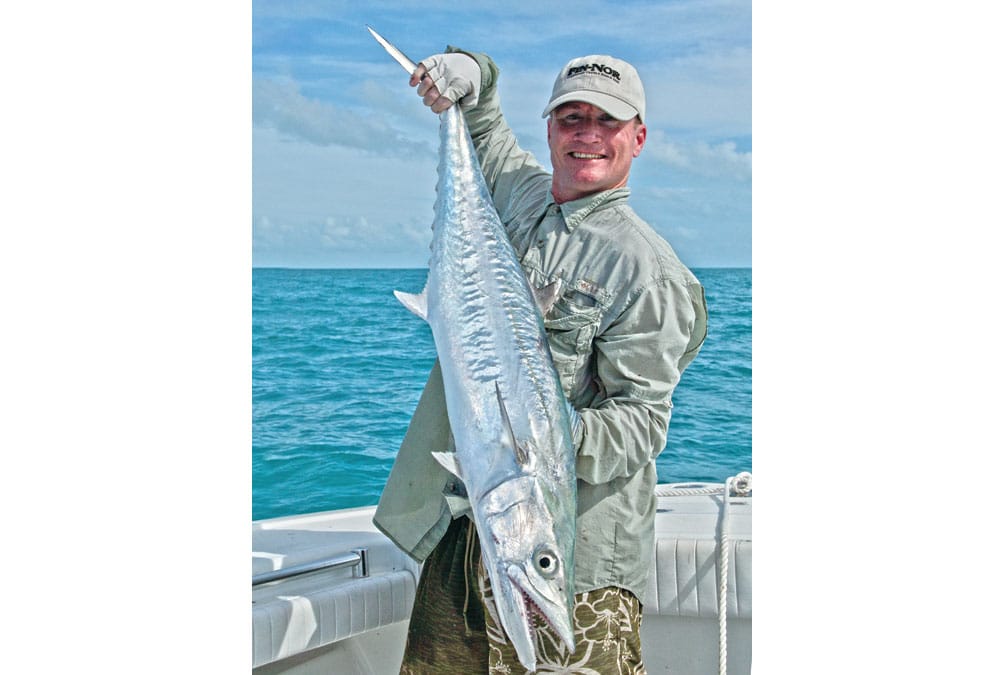
Key West Kingfish Fishing
Capt. Mark Schmidt Location: Key West, Florida
Schmidt is a charter fishing operator (captmarkschmidt.com), and since king mackerel from both the Gulf and the Atlantic stocks spend the winter off Key West, he’s right in the middle of the action. “Fishing is best down in Key West from December through early April,” he says, “depending on when the water cools down and then warms back up from the winter.
“On the Atlantic side, I like ledges that drop off fairly quickly from 60 to 120 feet,” he adds. “In the Gulf, we look for structure like rock piles or wrecks. We use lots of block chum to get started. The top baits are blue runners, ballyhoo, pilchards and threadfin herring, and pinfish work as well.”
As with our other experts, Schmidt is partial to blue runners. “My favorite bait is a blue runner, any size I can get,” he says. “I rig with a 6/0 to 8/0 thin-wire in-line circle hook on light, single-strand wire from 45 to 90 pounds, with a swivel on the opposite end. The hook and wire size depend on water clarity, size of bait we’re using, and what size fish we are seeing. If you have only small baits, downsize everything so the bait swims naturally.”
Schmidt’s rigging differs from the tournament pros. “On large blue runners, I use a smaller stinger hook, and I use a single rather than a treble. It’s easier on the fish,” he says. “Conditions dictate whether I anchor or drift. If it’s rough and windy and hard to get a decent drift, I’ll anchor. If I’m marking a lot of fish in a small area, I’ll try to anchor on them and chum. If the fish are spread out and hard to find, I’ll drift and slow troll. When we can get pilchards, we will anchor up on a likely spot and chum with the pilchards, as well as use them for bait.” This can trigger a kingfish feeding frenzy — quite a sight to behold.
No matter which bait you choose, honing your live-baiting skills will help you score more, and larger, kingfish. Just remember that it’s all about the bait.
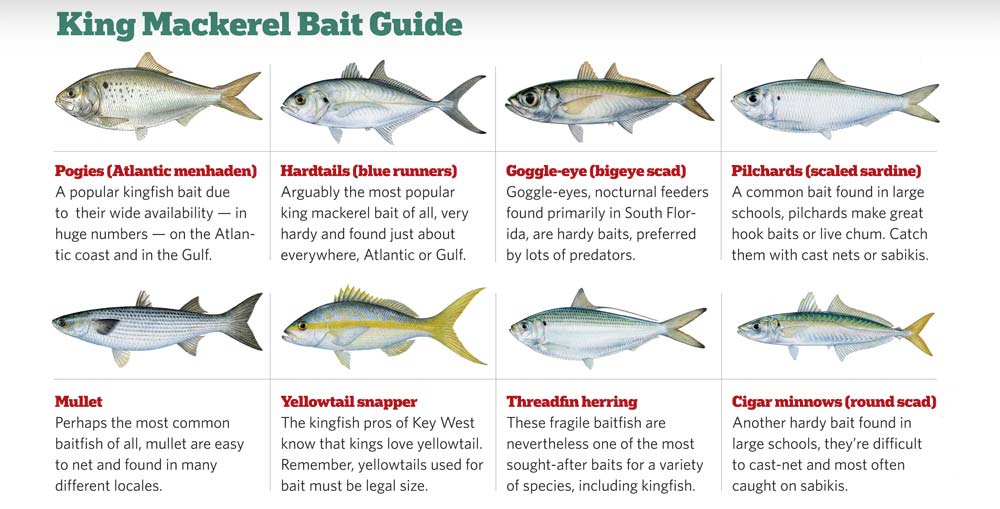
Kingfishing Tackle
Rods: Long trolling rods with relatively soft tips, capable of handling 20- to 30-pound-test line.
Reels: Conventional reels sized to match, with ultra-smooth drags.
Line: Most pros use monofilament rather than braid because kings have soft mouths, and mono is more forgiving.
Terminal Tackle: Wire leaders are a must. Most kingfish pros fish wire between No. 4 and No. 7, depending on water clarity. A single J-hook or circle hook is used for the lead hook, with one or two treble hooks on stingers. The stinger leader is usually slightly heavier than the main leader since the kings bite the stinger leader most often when feeding.









